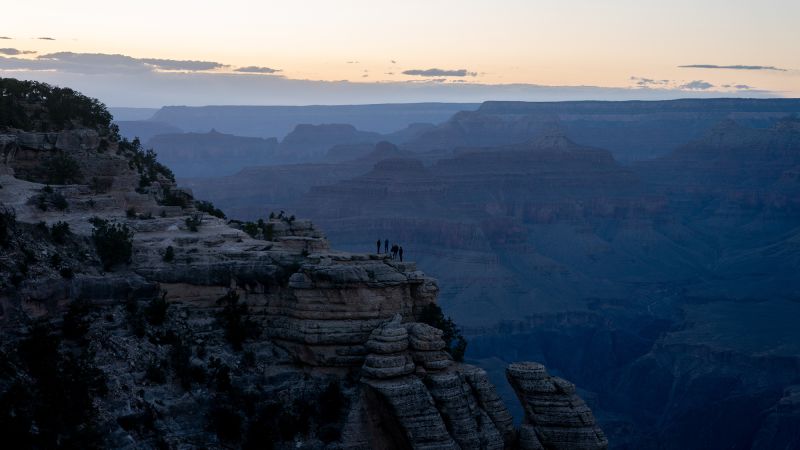The social media platform TikTok has become a pivotal medium for a new trend known as ParkTok, which seeks to merge humor with environmental advocacy by promoting the picturesque beauty of American national parks. The latest wave in viral content features short, captivating video clips that often juxtapose visually striking natural beauty against more provocative visuals or suggestive music. For instance, one such clip opens with a close-up of a man’s well-defined abs, only to transition three seconds later to the breathtaking panorama of Havasu Falls in Arizona, renowned for its stunning turquoise waters cascading over stunning red rock formations.
The trend is a burgeoning phenomenon on TikTok, with users from unofficial accounts embracing themes that celebrate various Utah landmarks, national parks, and nature sites across the United States. These videos, while indulging in playful innuendos, carry an important underlying message—a campaign to draw attention to the threats facing public lands, particularly amid governmental policies perceived as detrimental to environmental preservation. Notably, initiatives under the Trump administration have alarmed conservationists by suggesting cuts to park staffing and facilitating the exploration of natural resources through drilling and logging in sensitive wild areas.
Beyond the playful nature of ParkTok, many contributors are orienting their content toward activism. These users are calling for financial support for environmental organizations, such as the National Park Foundation, and urging followers to engage with their representatives to advocate for the protection of these vital ecosystems. This social media movement can be seen as part of a broader tradition of leveraging online platforms to mobilize public awareness and push for social change.
Individuals like Kim Tanner, who manages the popular Joshua Tree National Park TikTok account with over a quarter of a million followers, have noted the dual purpose of this trend. Tanner emphasizes that while the videos may initially attract viewers with enticing visuals, they also serve a higher objective of educating audiences about the natural beauty that is at risk. She believes this creative approach can capture public attention in a meaningful way, ultimately cultivating a deeper appreciation for the beauty of national parks among viewers.
The origins of ParkTok trace back to a broader desire to celebrate local natural treasures, such as Oregon’s Multnomah Falls, as expressed by Phoebe, an enthusiastic advocate for this lesser-known gem. However, the landscape of environmental advocacy shifted dramatically after the initiation of significant workforce reductions within the National Park Service, sparking fears about the future viability and preservation of public lands. As these concerns solidified, ParkTok influencers resolved to channel their creativity towards themed posts spotlighting pressing environmental issues confronting national park systems.
The TikTok community around ParkTok organized discussions to align their messaging, deciding on coordinated content that would effectively raise awareness surrounding the challenges posed by logging and federal land exploitation. The collective aim was to elevate consciousness around the beautiful landscapes while also stressing the imperative of safeguarding them. Despite the light-heartedness of many ParkTok clips, the videos garner significant engagement, amassing hundreds of thousands, if not millions, of views as users scream out their love for these breathtaking landscapes against a backdrop of poignantly chosen music.
Notably, while many of the videos skirt the realm of suggestiveness, they remain primarily centered on celebrating nature. One video featuring Bryce Canyon cleverly combines visual humor with commentary regarding economic constraints, reflecting a growing trend among park advocates to utilize creative storytelling in their environmental education efforts. Also interesting to note is that even international parks, like Banff National Park in Canada, have joined the ParkTok movement, supporting their American counterparts in raising awareness.
Both Tanner and Phoebe view their ParkTok endeavors as passionate hobbies rather than lucrative enterprises. They are both committed to their day jobs and hope to redirect any future TikTok earnings toward supporting conservation efforts. Ultimately, Tanner believes that ParkTok holds the potential to unite individuals across the political spectrum, as access to and appreciation for America’s natural beauty remains a shared interest. By evoking admiration for the majestic landscapes through encounter with stunning imagery, the influencers hope to cultivate an organic drive within viewers to form emotional connections with the land and foster a protective instinct for preserving it. In this way, TikTok transcends its entertainment label, transforming into a potent platform for environmental advocacy and community bonding.



